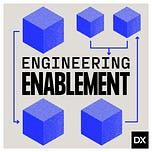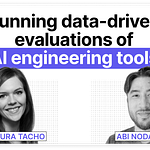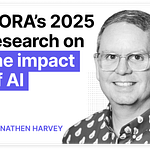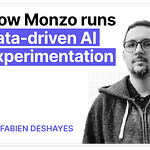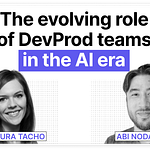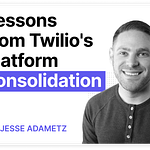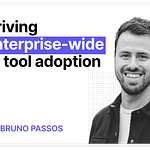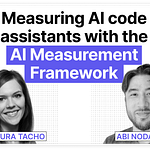Listen and watch now on YouTube, Apple, and Spotify.
In today’s episode, I caught up with Frank Fodera from CarGurus to hear how his team tackled two massive challenges: breaking up a monolith and rolling out AI tools across the engineering org. Frank shared how they built their internal developer portal, Showroom, from scratch—why they didn’t buy a tool like Backstage, how it supports their dev teams, and how they tie it all back to business impact. We also discussed their AI experiments, the metrics they’re tracking, and how they’re driving adoption without imposing one-size-fits-all solutions.
Some takeaways:
Internal developer portals: from spreadsheet to strategic platform
Started with a spreadsheet. CarGurus built their internal developer portal, Showroom, in 2019. The initial goal was simple: solve ownership confusion during a monolith-to-microservices transition.
Showroom now powers five key pillars:
Discoverability: Centralized source of truth for services, jobs, and ownership
Governance: Dynamic compliance checks to ensure “Golden Path” adoption
Self-serviceability: Spin up new services, subscribe to topics, and more
Transparency: Access logs, service data, and operational info in one place
Operational efficiency: Reduced cognitive load and friction across the SDLC
Interfaces with infra but abstracts complexity. Showroom sits on top of observability, alerting, and infra tools, providing a consistent experience even as backend systems evolve.
Evolved by solving real problems, not chasing trends. Rather than set out to “build an IDP,” the team invested in Showroom whenever it accelerated strategic initiatives—and saw massive returns.
Impact: 75-day setup cycles cut to <3 days. By leaning on automated workflows, best-practice templates, and centralized access to information, CarGurus dramatically increased service creation velocity.
Build vs. buy: why CarGurus chose to go homegrown
Started before Backstage existed. No off-the-shelf solution could meet their requirements when the initiative began.
Kept evaluating even after Backstage launched. But concluded the effort to customize it would be equal to enhancing their own tool.
Customization was critical. Their IDP integrates deeply with internal systems and niche tools not typically supported by commercial solutions.
Consistent UX across tools. Showroom provides a single pane of glass—developers don’t need to know what’s happening under the hood as tools change.
AI coding assistants: a platform-level initiative
Bake-off between three tools. CarGurus ran a head-to-head comparison across multiple AI assistants. Feedback showed different tools excelled in different languages and workflows.
Standardization isn’t the goal. The company is embracing flexibility—letting teams and engineers choose the best tool for their domain.
Qualitative feedback > raw telemetry. Developer sentiment and perceived time savings are more actionable than latency or code volume alone.
Measuring impact across six dimensions:
Speed: Diffs per engineer
Efficiency: Developer Experience Index (DXI)
Satisfaction: CSAT scores
Adoption: Tool usage tracking
Time savings: Self-reported
Burnout prevention: Monitoring job satisfaction
Maintainability dropped slightly. AI-generated code may feel less “owned,” even if it’s correct. A known and acceptable trade-off so far.
Driving adoption: what’s working
Leadership buy-in was immediate. Execs were eager to invest in efficiency. AI adoption was viewed as a strategic imperative.
Champions are key. Internal AI “power users” share tips via tech talks and videos to scale best practices organically.
Internal marketing makes a difference. Just telling developers they had access wasn’t enough. Framing AI tooling as a must-try (not optional) led to a meaningful adoption spike.
Focus is on education and experimentation. Goal is to help developers integrate AI into their daily flow—not just try it once and move on.
Expected ROI? ~15–30% gains in efficiency in early stages, with room to grow as usage matures and more advanced agent-based tools are explored.
In this episode, we cover:
(00:00) Intro: IDPs (Internal Developer Portals) and AI
(02:07) The IDP journey at CarGurus
(05:53) A breakdown of the people responsible for building the IDP
(07:05) The five pillars of the Showroom IDP
(09:12) How DevX worked with infrastructure
(11:13) The business impact of Showroom
(13:57) The transition from monolith to microservices and struggles along the way
(15:54) The benefits of building a custom IDP
(19:10) How CarGurus drives AI coding tool adoption
(28:48) Getting started with an AI initiative
(31:50) Metrics to track
(34:06) Tips for driving AI adoption
Where to find Frank Fodera :
• LinkedIn: https://www.linkedin.com/in/frankfodera/
Where to find Abi Noda:
• LinkedIn: https://www.linkedin.com/in/abinoda

